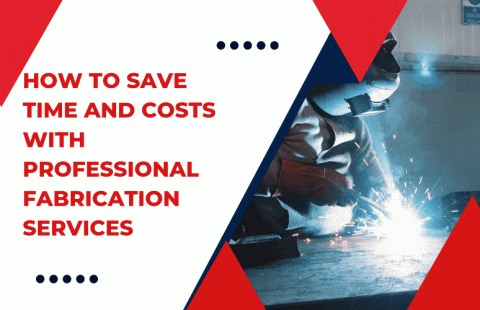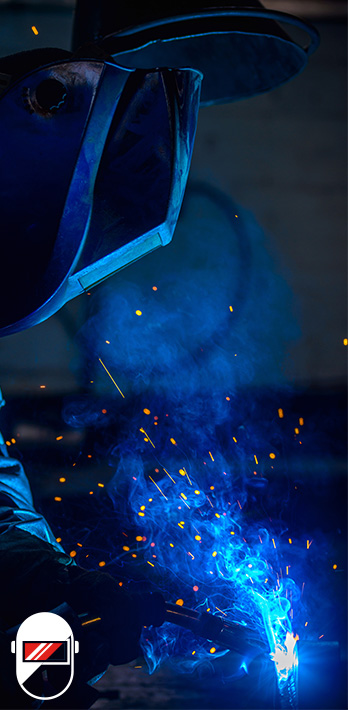
Top Trends in Custom Metal Fabrication for 2025
As we move in 2025, the metal fabrication industry is changing rapidly due to new technologies, sustainability efforts, and the need for more accurate, efficient, and eco-friendly methods.
Keeping up with these trends helps companies like Mobifab provide exceptional quality and innovation to our customers.
Let’s explore the main trends influencing metal fabrication this year.
- Increased Automation
Automation is transforming metal fabrication. Modern machines now use Artificial Intelligence (AI) and robotics. This combination improves accuracy and lowers mistakes. Automated systems take care of repetitive jobs, letting skilled workers concentrate on more complicated tasks. This change not only increases production speed but also cuts costs.
- Sustainable Practices
Sustainability leads finishing processes in 2025. Powder coating and low-VOC finishes are gaining popularity due to their eco-friendly qualities and durability. Advances in nano-coating technologies offer better corrosion resistance and visual appeal, meeting client needs for more durable finishes.
3. Advanced Materials
The materials for these processes are changing. By 2025, there will be more lightweight and strong materials. New developments in alloys and composites are leading to better and lighter products. These advanced materials improve performance and fuel efficiency in fields such as automotive and aerospace. As these materials become easier to obtain, they will transform design options.
- Digital Transformation Drives Efficiency
This transformation is revolutionizing custom metal fabrication. Fabricators use software like CAD for precise modeling and MES for real-time production data, optimizing operations. Cloud-based platforms enhance collaboration, allowing teams to access project details and share updates instantly, reducing delays and improving communication throughout the manufacturing process.
- Versatility
In 2025, CNC (Computer Numerical Control) technology is making sheet and plate rolling more precise and flexible. Machines can now achieve tighter tolerances, minimize mistakes, and work with a wider variety of materials and thicknesses. Advanced sensors help operators keep track of the rolling process, ensuring consistent results for different projects.
- Customization and Personalization
Consumers are increasingly demanding customized solutions. In metal fabrication, this trend is gaining momentum. Advances in technology allow for more personalized designs. Whether it’s unique shapes or tailored specifications, fabricators can now meet individual needs effectively. Companies that embrace customization will stand out in a crowded market. Offering bespoke solutions can lead to increased customer loyalty and satisfaction.
- Emphasis on Skilled Workforce
As automation increases, the demand for skilled workers is still very important. Complex jobs need human skills. Companies are putting money into training programs to improve their workers’ abilities and make sure they can operate advanced machines.
Skilled workers are key for understanding designs, solving problems, and keeping equipment running. With technology changing, the ability to adapt and learn new skills is becoming even more important.
8. The Internet of Things (IoT)
The Internet of Things is reshaping manufacturing. In this method, IoT devices monitor equipment and processes. This real-time data collection enhances decision-making. Fabricators can identify issues before they escalate, minimizing downtime. Moreover, predictive maintenance becomes easier with IoT, ensuring machines operate at peak efficiency. This trend leads to significant cost savings and improved productivity.
- Enhanced Safety Standards
Safety is very important in metal fabrication. As technology improves, safety rules also get better. In 2025, there will be tougher regulations and better safety practices. Companies will spend money on training and safety gear. New tools like wearable technology will keep track of workers’ health and safety instantly. By focusing on safety, businesses keep their workers safe and lower their risks.
- Global Supply Chain Optimization
The global supply chain is undergoing significant changes. Companies are looking for ways to optimize their supply chains to reduce costs. In 2025, expect a shift towards local sourcing. By working with local suppliers, businesses can minimize transportation costs and lead times. Additionally, a focus on regional materials enhances sustainability efforts. This trend also strengthens relationships within communities.
- Augmented Reality (AR) and Virtual Reality (VR)
AR and VR are about to change how training and design work in this method. These tools create engaging experiences for training workers. Employees can learn skills in a safe virtual space, which lowers the chance of accidents. Additionally, AR can help with design evaluations, enabling teams to see projects before they are made. This technology-focused method improves teamwork and creativity.
Finally , In 2025, custom metal fabrication will transform through automation, sustainability, and advanced technologies, enabling businesses to meet evolving customer needs.
Are you ready to adapt to the future of custom metal fabrication?
Choose Mobifab – Innovating for Your Success .



